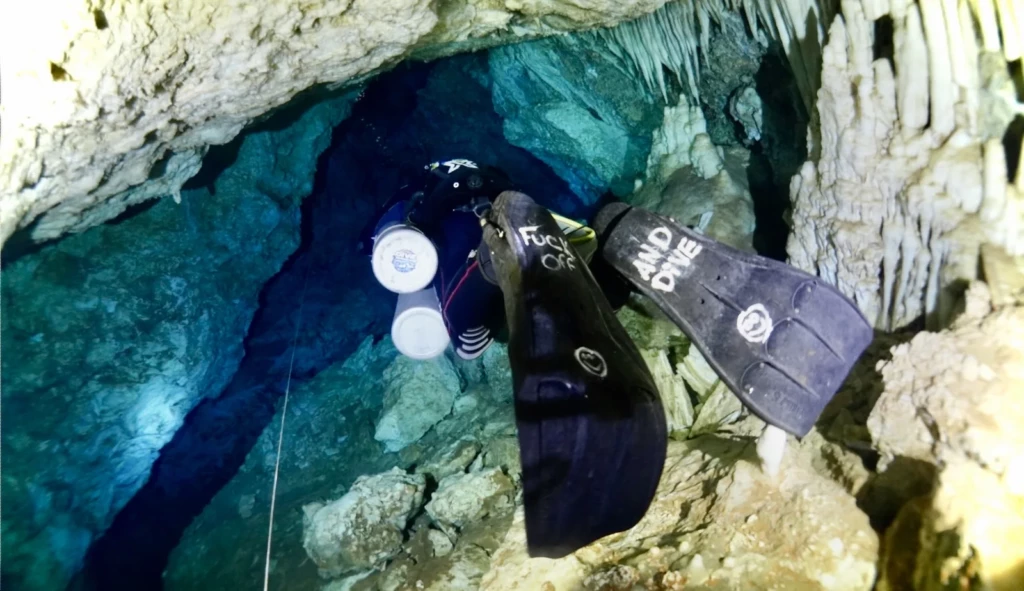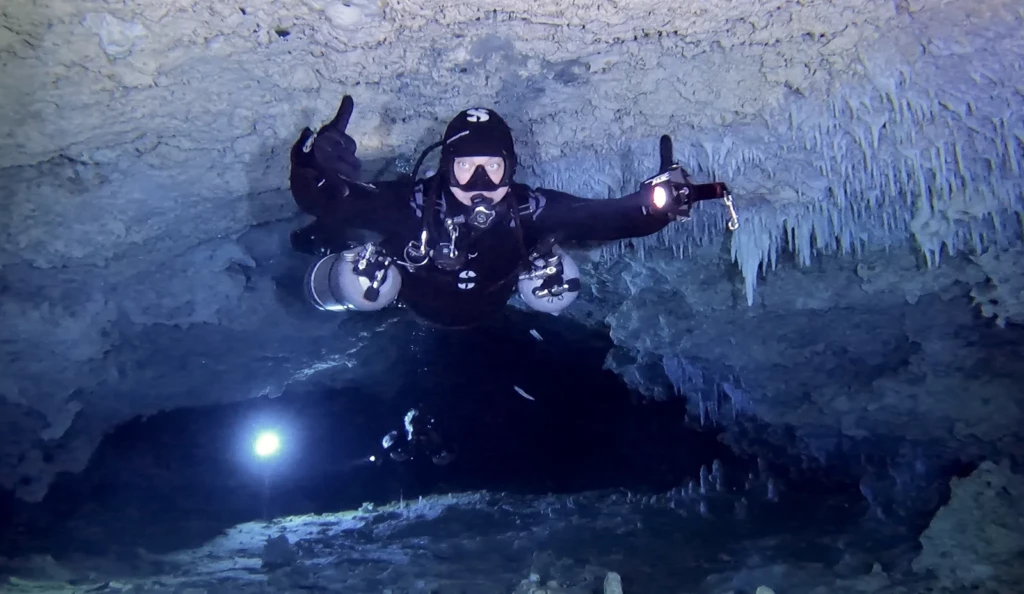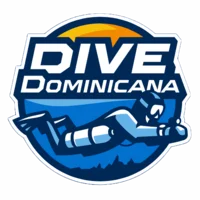- Cueva Taina
- La Roca
- El Tildo
- Jardines Orientales
- El Hipodromo
- Los Tres Ojos
- Kilómetro 14
- Los Tres Ojos
- Los Tres Ojos
- El Dudu
- Pozo de los Caballos
- Sistema La Escalera
- Cueca de Ganme
- El Pantano
- El Arbol
- Sonador II
- Agua Fria
- Jurassic Park
- El Coco Negro
- Cueva del Fun Fun
- El Chicho
- Padre Nuestro
- La Jeringa
- Mantial La Oculta
- Sistema Cangrejo
- Sistema La Negra
- Mantial de Porfidia
- Hoyo Azul
- Manantial del Toro
- El Asfalto
- Pozo La Piscina
- La Hicotea
- Palo de Luz
- El Pozo
- Trou Nicolas
- Mon Desir
- Oleg’s Bat House
- Macho
- Guerrero
- America La Maravilla
La Taina

Length: 1100 m
Water temperature: 25’c
Maximum depth: 43 m
Cave La Taina is considered one of the most mysterious and amazing underwater caves in the Dominican Republic. Although some of its tunnels are not yet fully explored, the cave is ideal for learning speleology and cave diving. The lake, from which the entrance to the cave begins, is especially beautiful in sunny weather, when the water surface acquires a bright turquoise hue. The total length of the underwater part of the cave is one and a half kilometers with depths from 8 to 43 meters. La Taina is a cenot & cave where you can do both recreational and decompression diving. Stalactites and stalagmites, formed over millions of years, will surprise you with their bizarre shapes.
“Halocline” – a unique feature of the cave – is a section at a depth of about 18 meters, where fresh water is bordered by salt seeping from the Caribbean Sea, forming a mirror surface. Due to the difference in density and temperature, the streams do not mix and there is a feeling that you are diving into another lake. When moving along the salt layer, everything around blurs and loses its shape, which creates a complete illusion of the unreality of what is happening.
For divers of all skill levels, we have developed various dive routes. From protozoa in the cavernous zone to decompression in the furthest tunnels of the cave.
This is a very beautiful cave suitable for diving by certified cave divers of all levels. Clear and warm water, beautiful and long tunnels, stalactites and stalagmites, a safe and interesting route – all this will make your dive unforgettable!
El Chicho

Length: 350 m
Water temperature: 25’c
Maximum depth: 18 m
El Chicho is the most visited cenote & cave in the Dominican Republic. Many divers, having dived into this cave, sincerely fell in love with cue diving and took it seriously. This cave is suitable for everyone! It starts with a small cave, which turns into a cave with a huge and spacious hall with many stalactites and stalagmites. Also in the cave there are narrow tunnels and passages from one hall to another. It is ideal for cave courses. The total length of the cave is more than 350 meters – clear fresh water, beautiful halls, a safe route, no suspension – all this makes the cave ideal for the first dives!
Padre Nuestro

Length: 193 m
Water temperature: 25’c
Maximum depth: 13 m
Padre Nuestro is a cenote & cave located in a national eco-park near the resort village of Bayahibe. The entrance to it is a small puddle by the road, in which small shrimps swim and horses drink water – this is what you will see when you arrive at the dive site. However, first impressions are deceiving! When diving into this cave, already at the entrance, the landscape will surprise you with its beauty. In the first hall of the cenote, under the light of lanterns, fantastic figures of stalactites and stalagmites will appear. This is a great place for underwater video and photography. The second hall of the cave is huge and very beautiful. To understand its beauty, you need to immerse yourself in it. It’s like an old cathedral, over which you fly in clear water. Cosmic unreality!
La Roca

Length: 250 m
Water temperature: 25’c
Maximum depth: 25 m
La Roca. This cave is located close to Santo Domingo Airport and is about a 45-minute drive from downtown Santo Domingo. You will need directions to find the cave, but it is not very difficult. The cave is situated on private property, and the owners have transformed it into a discotheque, creating one of the most unique entrances to a cave. Access is very easy, with cement steps leading to the entrance pool. The entrance descends directly through a series of boulders to the main line. The rock inside the cave is dark and unadorned, while the water has a peculiar greenish tint, creating a dark and eerie atmosphere throughout the cave. At the far end of the cave, there is a rise in the highway, reaching a height of about 4 meters and culminating with a boulder. This entire system consists of a series of collapses and boulders. The cave is suitable for divers of any configuration: Sherpas are available to carry your tanks for a fee, and on-site parking ensures the safety of your vehicles.
El Tildo

Length: 300 m
Water temperature: 25’c
Maximum depth: 12 m
El Tildo. This cave is located near Santo Domingo Airport, right next to the road, just past the toll booths in the direction of the city on the right side of the road, not on the highway. The cave is privately owned, and there is an admission fee for diving. Access is very easy, and a short walk leads down a small slope to the water’s edge. The main line starts just below the ledge, and the cave consists entirely of very sharp and jagged rocks, with no decorations. There is a pronounced halocline at a height of about 6 meters. Swimming along the line leads to a large room with a low ceiling made of twisted sharp stones. There is a passage to the right that leads to another series of tunnels and drop-offs. The main line passes through two separate entrances before finally ending in a large, shallow room. This cave has a distinct type of rock compared to “Taina” or “La Roca.” It is very white, jagged, and dissolved, resembling sharp Swiss cheese. This cave is suitable for all configurations, although it may be tight in some areas. Access is very easy, and cars are safe if parked on-site.
Jardin Oriental

Length: 1500 m
Water temperature: 25’c
Maximum depth: 38 m
Cave Jardin Oriental is located in the suburbs of Santo Domingo. It is a cave that combines huge halls and narrow tunnels. The vaults of the cave showcase a petrified seabed, with shells and skeletons of marine life embedded into the cave walls. At a depth of 20 meters or more, you will encounter the mesmerizing halocline in the vast halls. It presents a fantastic sight! The route then takes you through the narrow labyrinths of the cave, adding to the surreal underwater experience.
To explore this cave, you will need proper equipment, transportation, and decompression mixtures. Please note that the cave is only suitable for advanced cave divers.
El Dudu

Length: 500 m
Water temperature: 25’c
Maximum depth: 20 m
The El Dudu cave is located approximately 15 minutes east of Cabrera. You will notice a sign on the right side of the road that says ‘Lake Dudu.’ El Dudu is a large sinkhole and can be easily accessed via a cement staircase leading down to the water’s edge. It is a popular tourist attraction and a local hangout, where people jump in, swim, and sometimes indulge in alcohol. From the surface, you can easily float to the far left, where a large tunnel and a cave line begin. This tunnel extends for about 100 meters and has a significant air pocket at a depth of 50 meters.
As you explore the tunnel, you will come across an area of broken slabs and a warning sign. Tie into the cave line (marked with a yellow arrow) and pass through the restriction. This will lead you to the main line of the cave, situated within the halocline. The initial part of the cave features a large, high main tunnel adorned with dark ornaments marked by tannin stains. Some columns reach a height of over 15 meters, and the maximum depth here is 20 meters. Towards the end of this tunnel, there is a steep slope that rises to about 6 meters. At this point, there is a T junction where the right side leads to an air pit with good air but no external access, while the left side continues the cave passage.
Continuing along the main line, the cave descends, and you pass through a series of peculiar dark stalactites before the tunnel opens up again. The remainder of the dive offers less scenery and is generally shallower, with an average depth of only 6-7 meters. After approximately 45 minutes of diving, you will reach the end of the line, which leads to another entrance known as ‘Cueva de Lilly.’ Here, you may encounter bats, snakes, scorpions, and tarantulas, which are common cave-dwelling creatures. If necessary, you can exit via Cueva de Lilly, although it can be inconvenient. Upon returning to the surface, you can swim around the gap on the left and explore the cave area, which consists of two more tunnels leading to the third entrance called ‘Pozo de los Caballos,’ before making your way back to the stairs.
The cave area is impressive, with grandiose stalactites adorned with mollusks and unique watercolors. It is suitable for divers of any configuration. Sherpas are available to carry your gear for a small fee, and the area is safe for cars and belongings.
